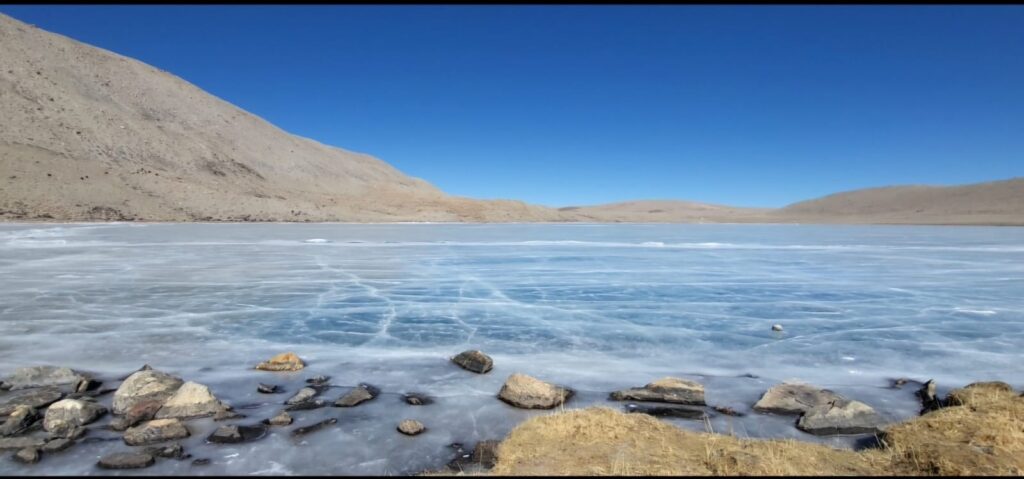Why the Gurudongmar Lake Perimeter Is a Bucket‑List Trek
Walking the Gurudongmar Lake perimeter isn’t just another Himalayan stroll—it’s a spiritual, physical, and photographic odyssey at 17,800 ft. Revered across Buddhist and Sikh traditions, this frozen high‑altitude lake in North Sikkim promises surreal landscapes, echoing ice creaks, and stories of divine energy. In this guide, you’ll get expert tips on travel logistics, altitude survival, gear essentials, and how to capture unforgettable images. want to know how it feels to reach this altitude? check out my story on the Gurudongmar lake trek.
How to Reach and Prepare for the High‑Altitude Walk
1. Base: Lachen to Gurudongmar Lake
Start Point: Lachen (2,750 m)
Drive Duration: 1.5–4 hours via Chungthang depending on traffic and road conditions
Vehicle: Only registered Sikkim permits—arrange through your local tour operator
Departure Time: 5:00–6:00 AM to avoid afternoon snow or road closures
Stay one night in Lachen for acclimatization and to reduce Acute Mountain Sickness (AMS) risk.
2. Permit Requirements
Indian Nationals: Protected Area Permit (PAP) mandatory
Foreign Nationals: Restricted
The 5–6 km Perimeter Walk: What to Expect
Terrain & Conditions
-
Frozen Surface: Ice sheets often cover 80% of the lake—listen for cracking echoes.
-
Wind & Temperature: Gusts up to 30 km/h; daytime temps from -8°C to 5°C.
-
Footing: a stone path around the lake makes it easier, pockets of snow, and occasional rock patches
Altitude Challenges at 17,800 ft
-
Breathing: Oxygen level ~50% of sea‑level—expect shallow, rapid breaths.
-
Symptoms of AMS: Headache, nausea, dizziness, fatigue.
-
Mitigation:
-
Move slowly, taking 100 m breaks every 10 minutes.
-
Stay hydrated (at least 1 L water) with electrolyte packets.
-
Carry diamox (acetazolamide) if prescribed.
-
Expert Gear & Packing List
| Category | Items |
|---|---|
| Clothing | Down jacket, windproof shell, thermal base layers, gaiters |
| Head & Hands | Beanie, balaclava, sunglasses, gloves |
| Footwear | Insulated trekking boots or gumboots + ice spikes |
| Nutrition | Energy bars, nuts, ORS sachets, 1.5 L water |
| Safety & Health | First‑aid kit, AMS meds, sunscreen (SPF 50+), lip balm |
| Photography & Tech | Spare batteries (keep in pocket), polarizing filter, tripod (mini) |
Insider Tip: Store batteries close to your body to prevent cold drain.
Step‑by‑Step: Walking the Perimeter
-
Initial Stretch (0–1 km): Ice is thick; take wide, cautious steps.
-
Mid‑Point Ritual (2–3 km): Spot the lakeside temple—locals often perform puja here.
-
Crossing the Narrow End (4 km): Wind tunnels make this the coldest section.
-
Final Stretch (5–6 km): Pace slows—focus on breathing and short strides.
-
Exit & De‑brief: Return to checkpoint, enjoy chole bhature at the army canteen

Photography Tips for the Frozen Lake
Golden Hour Shooting: 6–8 AM for soft blues and pinks.
Use a Polarizer: Cuts glare on ice and snow for richer colors.
Prevent Lens Fog: Wait for your camera to warm gradually when entering shelters.
Composition Hacks: Frame the temple or a yak herd against the horizon for scale.
Safety & Health: Survival at Extreme Altitude
Weather Shifts: the weather can be very unpredictable, plan accordingly.
Buddy System: Never walk alone—pair up and monitor each other for AMS signs.
Emergency Evacuation: Army posts can airlift severe cases; get insurance that covers HAA (High Altitude Airlift).
Conclusion
Walking around Gurudongmar Lake at 17,800 ft is a test of will, fitness, and spirit. With the right permits, gear, and mindset, it becomes a transformative journey.
Related Posts:
Gurudongmar Lake Trek: 17,800 ft of Silence and Survival – What it really takes to reach this remote lake.
Kukhre Trek: The Ultimate Winter Challenge in North Sikkim – Another extreme winter adventure.
How to Choose Sikkim’s Ultimate Tea: Temi vs Tashi Delek – Reward yourself after the trek with the perfect local tea.

